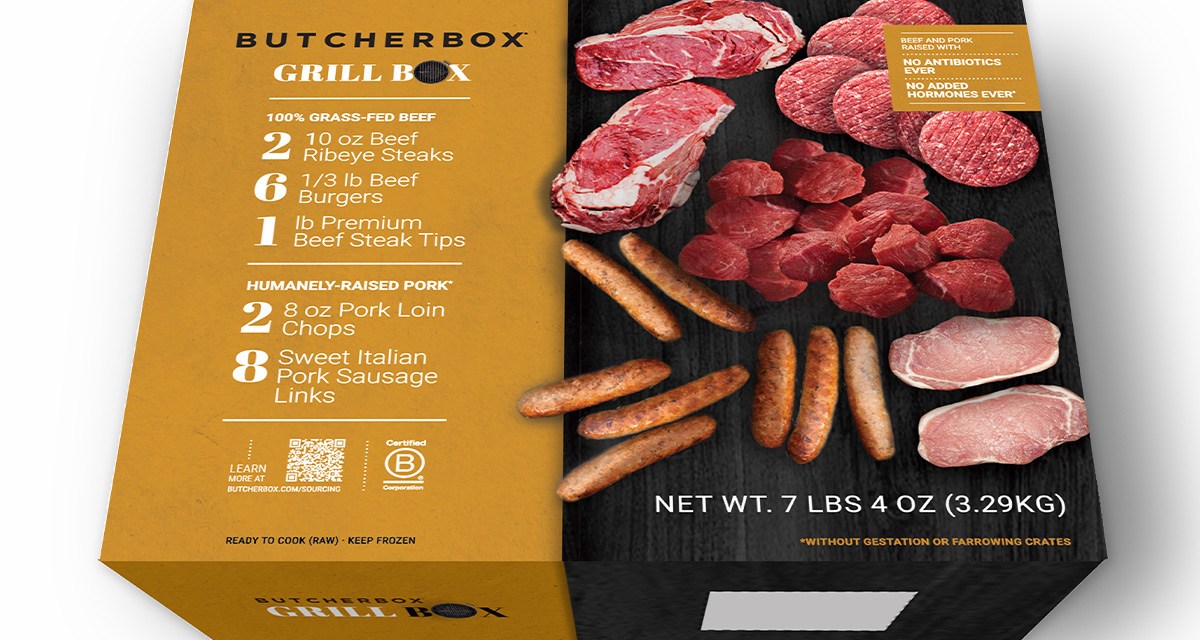ButcherBox launches in BJ’s Wholesale Club

Meat delivery startup ButcherBox is making its first major foray into retail after nearly seven years as a solely direct-to-consumer business.
ButcherBox recently struck a wholesale deal with BJ’s Wholesale Club. The club retailer is now carrying a grill box from ButcherBox, which retails for $99, at 129 of its locations. “Getting our online audience to shop offline is something new for us, but something that we’re excited to tackle,” Mike Salguero, founder and CEO of ButcherBox said.
Salguero said ButcherBox decided to expand into wholesale because after the Covid-induced bump in grocery delivery subsided, it became clear that the majority of people are still buying groceries in stores, “and we want to be where the market is.” In stores, ButcherBox is focused on selling gift boxes and curated offerings that it doesn’t have on its website.
ButcherBox, which first launched in 2015, has also largely resisted going into retail up until now because it’s been able to maintain sufficient growth online. ButcherBox is bootstrapped, with approximately 425,000 subscribers, and roughly $600 million in revenue last year. ButcherBox’s focus is on making it easier for people to buy grass-fed, high-quality meat that they might not be able to access in their nearby grocery store and instead, delivering it to people’s homes. With the exception of its wholesale forays, ButcherBox is subscription only.
The startup got connected to BJ’s Wholesale through its main meat buyer, who previously worked at the club retailer for about 20 years before joining ButcherBox. Before launching at BJ’s Wholesale, ButcherBox had experimented with selling its products through some specialty grocers — think cheese shops and pantry essentials stores — in a designated freezer. But Salguero said that those partnerships didn’t result in the sales volume that ButcherBox was looking for.
In order to promote the BJ’s Wholesale launch, ButcherBox is running some campaigns with influencers. Affiliate marketing was one of the first channels ButcherBox invested in after it launched in 2015, and the startup gained a loyal following among nutrition and fitness influencers in its early days. These days, ButcherBox runs everything from podcast ads to TV commercials.
Salguero said that he is mainly looking to learn what type of customer ends up buying through BJ’s Wholesale — whether it ends up being predominantly new or existing customers. And, if it is new customers,”once they’ve purchased that product, [if] they’ll consider coming to us online,” Salguero said.
Bryan Gildenberg, founder of Confluencer Commerce, said that when it comes to club retailers, Costco in particular has historically “had the finger on the pulse of really great, emerging local brands,” due to its combination of a nationwide presence and a regional buying structure. Most of BJ’s Wholesale’s stores, by contrast, are located in the Northeast and the Southeast. As such, Gildenberg said it has been “more of a place for established brands.” Gildenberg also noted that “when the economy slows down, [BJ’s Wholesale] attract a lot more everyday grocery shoppers than they normally do.”
The benefit of club retailers for digitally-native brands, Gildenberg said, is that they offer brands “access to more of an upmarket shopper than a mass retailer, and are able to reach an audience that is a little more affluent.” And, the basket sizes are often larger. However, brands typically have to sell at a lower gross rate compared to a conventional retailer.
In addition to the BJ’s Wholesale deal, Salguero said that new product expansion is a key area of focus for ButcherBox this year. While ButcherBox has long been known for grass-fed meat, it is also launching more prepared items, like hot dogs and egg bites. “We’ve always believed that the real value of ButcherBox is adding all the additional items to your box,” Salguero said.
Feedback from subscribers informs much of these efforts. For example, ButcherBox launched pet treats after hearing from customers that “it would be great if they could find this quality of product in things that they’re feeding their pet,” Salguero said.
Salguero also sees this as a key way to retain subscribers as customers get pickier. While inflation has cooled in recent months, Salguero said he sees customers being “more cautious” with how they are spending.
“I think you just need to be obsessed with keeping the member central to all of the conversations that are happening at the company,” Salguero said, and “not forgetting that you have a member who is relying on you, and has other options and can go elsewhere.”
